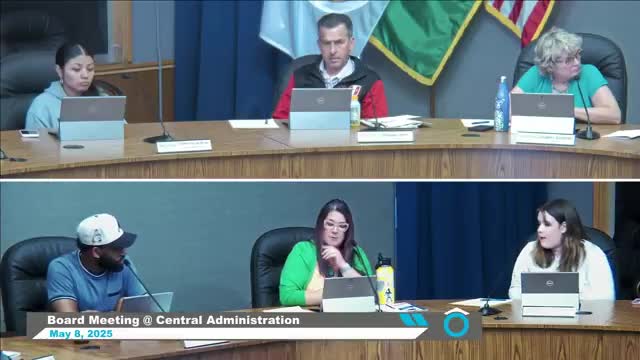School budget cuts scrutinized as state faces education funding deficits
May 10, 2025 | Tacoma School District, School Districts, Washington
This article was created by AI summarizing key points discussed. AI makes mistakes, so for full details and context, please refer to the video of the full meeting. Please report any errors so we can fix them. Report an error »

The Tacoma School District's Board Meeting on May 8, 2025, highlighted critical financial discussions that could significantly impact the district's operations and educational quality. The meeting served as a platform for board members to address the complexities of the district's budget, particularly the distinctions between the capital budget and the operating budget.
During the meeting, officials clarified that the district operates with six distinct funds, including the general fund, which is primarily used for daily educational operations and staff salaries. Other funds include a transportation vehicle fund, a trust fund for scholarships, and an Associated Student Body fund for student activities. The capital fund, which is crucial for infrastructure improvements, is financed through voter-approved bonds and levies, specifically earmarked for designated projects.
The board also discussed ongoing budget reductions, particularly in administrative costs, as part of a broader strategy to manage financial constraints. Despite these efforts, board members expressed frustration over the state’s budget shortfall, which is projected to be between $12 million and $15 million. The new governor's resistance to increasing tax revenue has further complicated the district's financial landscape, limiting the legislature's ability to address funding needs adequately.
Moreover, concerns were raised about federal implications affecting the district's values, particularly regarding diversity, inclusion, and equity. The board noted that the Department of Justice and the Department of Education have initiated actions that could threaten public education's foundational principles, adding another layer of uncertainty to the district's future.
In summary, the Tacoma School District's board meeting underscored the pressing financial challenges facing the district, driven by rising operational costs and external political pressures. As the board navigates these complexities, the implications for students and educational quality remain a central concern. The discussions reflect a broader struggle within public education to secure adequate funding and maintain essential services amidst evolving legislative and federal landscapes.
During the meeting, officials clarified that the district operates with six distinct funds, including the general fund, which is primarily used for daily educational operations and staff salaries. Other funds include a transportation vehicle fund, a trust fund for scholarships, and an Associated Student Body fund for student activities. The capital fund, which is crucial for infrastructure improvements, is financed through voter-approved bonds and levies, specifically earmarked for designated projects.
The board also discussed ongoing budget reductions, particularly in administrative costs, as part of a broader strategy to manage financial constraints. Despite these efforts, board members expressed frustration over the state’s budget shortfall, which is projected to be between $12 million and $15 million. The new governor's resistance to increasing tax revenue has further complicated the district's financial landscape, limiting the legislature's ability to address funding needs adequately.
Moreover, concerns were raised about federal implications affecting the district's values, particularly regarding diversity, inclusion, and equity. The board noted that the Department of Justice and the Department of Education have initiated actions that could threaten public education's foundational principles, adding another layer of uncertainty to the district's future.
In summary, the Tacoma School District's board meeting underscored the pressing financial challenges facing the district, driven by rising operational costs and external political pressures. As the board navigates these complexities, the implications for students and educational quality remain a central concern. The discussions reflect a broader struggle within public education to secure adequate funding and maintain essential services amidst evolving legislative and federal landscapes.
View full meeting
This article is based on a recent meeting—watch the full video and explore the complete transcript for deeper insights into the discussion.
View full meeting
